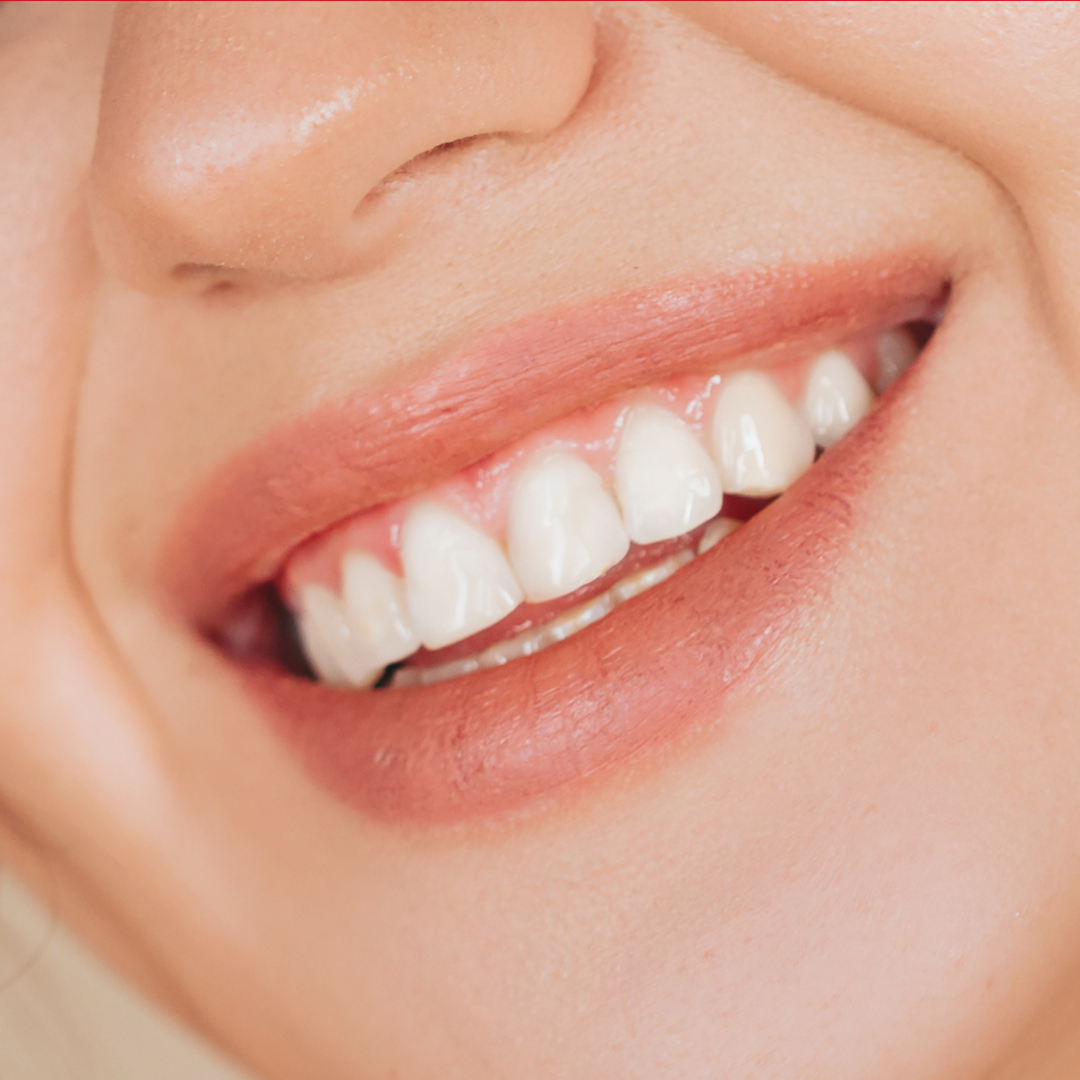Orofacial Myofunctional Disorders
Research has discovered that around 38% of the population has some type of OMD condition
Orofacial Myofunctional Disorders (OMDs) are disorders of the muscles and functions of the face and mouth. OMDs may affect, directly and/or indirectly, breastfeeding, facial skeletal growth and development, chewing, swallowing, speech, occlusion, temporomandibular joint movement, oral hygiene, stability of orthodontic treatment, facial esthetics, and more.
Most OMDs originate with insufficient habitual nasal breathing or with oral breathing. The subsequent adaptation of the muscles and the orofacial functions to a disordered breathing pattern creates many OMDs. These Disorders may impact treatments by orthodontists, dentists, dental hygienists, speech-language pathologists, and other professionals working in the OMD area.
Some Orofacial Myofunctional Disorders (OMDs) can be, but are not limited to;
- Tongue Thrust
Jaw Pain
Cross Bite
Nail Biting
- Short Upper Lip
- Sleep Apnea
- TMJ/TMJD
- Thumb/finger/tongue sucking

Correct swallowing depends on a proper relationship between muscles of the face, mouth and throat. The act of swallowing is one function that depends on the body’s vital balance. To swallow properly, muscles and nerves in the tongue, cheeks and throat must work together in harmony. When a person swallows normally, the tip of the tongue presses firmly against the roof of the mouth or hard palate, located slightly behind the front teeth. The tongue acts in concert with all the other muscles involved in swallowing. The hard palate, meanwhile, absorbs the force created by the tongue.
Orofacial Myofunctional
Disorders
Research has discovered that around 38% of the population has some type of OMD condition
Orofacial Myofunctional Disorders
Research has discovered that around 38% of the population has some type of OMD condition
Orofacial Myofunctional Disorders (OMDs) are disorders of the muscles and functions of the face and mouth. OMDs may affect, directly and/or indirectly, breastfeeding, facial skeletal growth and development, chewing, swallowing, speech, occlusion, temporomandibular joint movement, oral hygiene, stability of orthodontic treatment, facial esthetics, and more.
Most OMDs originate with insufficient habitual nasal breathing or with oral breathing. The subsequent adaptation of the muscles and the orofacial functions to a disordered breathing pattern creates many OMDs. These Disorders may impact treatments by orthodontists, dentists, dental hygienists, speech-language pathologists, and other professionals working in the OMD area.
Some Orofacial Myofunctional Disorders (OMDs) can be, but are not limited to;
- Tongue Thrust
Jaw Pain
Cross Bite
Nail Biting
- Short Upper Lip
- Sleep Apnea
- TMJ/TMJD
- Thumb/finger/tongue sucking

Correct swallowing depends on a proper relationship between muscles of the face, mouth and throat. The act of swallowing is one function that depends on the body’s vital balance. To swallow properly, muscles and nerves in the tongue, cheeks and throat must work together in harmony. When a person swallows normally, the tip of the tongue presses firmly against the roof of the mouth or hard palate, located slightly behind the front teeth. The tongue acts in concert with all the other muscles involved in swallowing. The hard palate, meanwhile, absorbs the force created by the tongue.
Because a person swallows 500-1000 times a day, improper swallowing can cause a variety of problems. But it is actually the resting position of the tongue that does the most damage because it is more constant.
Dental Problems related to an OMD
When a person swallows incorrectly, the tip and/or sides of the tongue press against or spread between the teeth. This is commonly called a tongue thrust. Constant pressure from resting or incorrectly thrusting the tongue away from the hard palate may push teeth out of place. That pressure may later prevent teeth from erupting (breaking through the gum).
An OMD may lead to an abnormal bite – the improper alignment between the upper and lower teeth known as malocclusion. This problem may lead to difficulties in biting, chewing, swallowing, and digesting of food.
Tongue thrust is the act of pushing the tongue against or between the teeth when swallowing.
The constant pressure of the tongue against or between the teeth will not allow the teeth to bite together. This is known as an open bite.
An improper alignment or malocclusion between the upper and lower teeth can lead to difficulties in biting and chewing food.
Cosmetic Problems related to an OMD
Often the most obvious symptom of incorrect oral posture involves the muscles of the face. A dull, sluggish appearance and full, weak lips develop when muscles aren’t operating normally.
Constantly parted lips (with or without mouth breathing) also signal this disorder. A person swallowing incorrectly will often purse and tighten the muscles of the cheeks, chin and lips – a symptom known as a facial grimace. This can give the chin a knobby appearance because these muscles are being overused.
The face can have a dull sluggish appearance when the muscles are not in proper balance.
An incorrect swallow will purse and tighten the muscles of the cheeks, chin, and lips, causing a facial grimace
Mouth breathing or constantly open lips is a cause and/or signal of tongue thrust and low tongue rest posture.
Speech Problems that may develop from an OMD
A person with abnormal oral muscle patterns may suffer a lisp or have difficulty in articulating sounds. If muscles in the tongue and lips are incorrectly postured, this can prevent a person from forming sounds of normal speech.
Improper oral muscle function may additionally lead to TMJ dysfunction, headaches, stomach distress (from swallowing air), airway obstruction, and other health challenges.
Sleep Disordered Breathing and Mild to Moderate OSA
Recent research has shown that an Orofacial Myology program may reduce the symptoms of sleep disordered breathing (such as snoring), and ameliorate mild to moderate OSA (obstructive sleep apnea). When functioning and used properly, the muscles of the tongue, throat, and face, can reduce obstruction to the airway.
Orofacial Myology eliminates many of the causes of swallowing abnormalities and improper rest posture of the tongue.
An Orofacial Myology program is painless and the exercises are relatively simple. When certain muscles of the face are activated and functioning properly, other muscles will follow suit until proper coordination of the tongue and facial muscles is attained.
For success in this program, consistent exercise every day is necessary until the patient has corrected their improper muscle pattern. It also takes commitment by the patient, family – and time.
Treatment usually consists of a regular program of exercises over a 6 – 12 month period, although treatment length may vary.
Multi-Disciplinary Approach
A properly trained myofunctional therapist is one member of the team that will successfully treat an OMD. Other allied professionals such as dentists, orthodontists, and osteopaths can ensure that the patient’s needs are addressed and handled appropriately. We feel that the patient needs to be looked at from a variety of approaches in order to be successful in treatment.
About Tongue Tie
The tongues natural resting position should be on the roof of the mouth. The tongue serves as a guide for the proper growth of the palate (maxilla) and the face. With each proper swallow of food, water and saliva, the forces of the tongue muscles form the shape of the roof of the mouth. For a person with a tongue tie, their tongue may not be able to reach the top of the mouth because it is physically restricted. As a result, the palate will develop smaller and narrower, the teeth grow in crowded and overlapped. The lower jaw tends to follow the lead of the upper jaw developing smaller and crowded as well. You might notice the sides of your tongue have a “scalloped” appearance, this is from the teeth either partially resting on the tongue or the tongue pressing against the sides of the teeth because it is cramped in a space that is too small for it. The airway becomes restricted, especially during sleep, due to lack of space for the tongue which has nowhere to go other than back to block the throat. The now restricted airway leads to a pandora’s box of health issues.
What is a Tongue Tie?
Many people I talk to think that the term “tongue tie” is just a figure of speech. They are always surprised to learn that it is actually a real medical condition which affects the oral and facial development and has a range of health consequences that may take years to manifest. A tongue tie or ankyloglossia is a restriction of mobility in the tongue. Under the tongue is a tissue called the lingual` frenum or frenulum. The lingual frenum attaches from the tongue to the floor of the mouth. If the frenum is short, it will limit the range of motion the tongue has. There are different degrees of restriction and different types of tongue ties. The tongue should be able to elevate and “suction up” across the roof of the mouth without compensating by using the muscles of the neck and the floor of the mouth. It should be a natural motion and not an effort or struggle for the tongue. Part of the Myofunctional assessment is to check for the tongue’s range of motion and function.
Signs there might be a Tongue Tie
- Speech issues
- Jaw pain, clenching & grinding
- Head/neck/shoulder tension
- Forward head posture-dry mouth which can cause increased risk for gum disease/cavities
- Slow orthodontic movement
- Orthodontic relapse
- Tongue thrust
- Snoring/sleep disordered breathing/upper airway resistance syndrome/mouth breathing
What can happen if tongue tie isn’t addressed:
- Speech issues
- Feeding issues
- Improper swallow
- Mouth breathing
- Ear infections
- Unable to clean teeth
